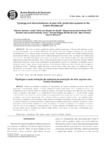Por favor, use este identificador para citar o enlazar este ítem:
http://www.alice.cnptia.embrapa.br/alice/handle/doc/853145Registro completo de metadatos
| Campo DC | Valor | Lengua/Idioma |
|---|---|---|
| dc.contributor.author | COSTA, R. G. | pt_BR |
| dc.contributor.author | DAL MONTE, H. L. B. | pt_BR |
| dc.contributor.author | PIMENTA FILHO, E. C. | pt_BR |
| dc.contributor.author | HOLANDA JUNIOR, E. V. | pt_BR |
| dc.contributor.author | CRUZ, G. R. B. da | pt_BR |
| dc.contributor.author | MENEZES, M. P. C. | pt_BR |
| dc.date.accessioned | 2011-04-09T15:25:05Z | - |
| dc.date.available | 2011-04-09T15:25:05Z | - |
| dc.date.created | 2010-05-17 | pt_BR |
| dc.date.issued | 2010 | pt_BR |
| dc.identifier.citation | Revista Brasileira de Zootecnia, v. 39, n. 3, p. 656-666, 2010. | pt_BR |
| dc.identifier.uri | http://www.alice.cnptia.embrapa.br/alice/handle/doc/853145 | pt_BR |
| dc.description | This work was aimed to identify the typology and the characteristics of the goat milk production systems. Seventy rural properties were researched. Multivariate data analysis with cluster formation techinique was used, and also the identification of five different groups of production systems. The production systems were classified through technical and economical efficiency, ranking groups 1 and 2 as high technological level, groups 3 and 4 as medium level, and the group 5 as low level. The high technological level systems used practices of more rational handling with larger technological employment becoming better specialized. These systems present the largest revenues of milk and unitary net profit. Medium technological production systems adopt technological recommendations and look for alternatives of handling practices. Production system 1 adopts intensive sanitary practices for the farmyard facilities and stables, but this does not happen in the production system 2. Vermifuge is applied three times a year in system 1 while in the system 2 it is applied twice a year. The producers of the systems 1 and 2 obtain more financial resources through official credit lines, and the producers of the group 2 are more punctual on the pay off deadlines. | pt_BR |
| dc.language.iso | eng | eng |
| dc.rights | openAccess | eng |
| dc.subject | Análise de agrupamento | pt_BR |
| dc.subject | Tipologia | pt_BR |
| dc.subject | Caprino leiteiro | pt_BR |
| dc.subject | Cluster | pt_BR |
| dc.subject | Handling | pt_BR |
| dc.subject | Production system | pt_BR |
| dc.subject | Typology | pt_BR |
| dc.title | Typology and characterization of goat milk production systems in the Cariris Paraibanos. | pt_BR |
| dc.type | Artigo de periódico | pt_BR |
| dc.date.updated | 2019-09-23T11:11:11Z | pt_BR |
| dc.subject.thesagro | Sistema de produção | pt_BR |
| dc.subject.thesagro | Leite de cabra | pt_BR |
| dc.subject.nalthesaurus | Goat milk | pt_BR |
| riaa.ainfo.id | 853145 | pt_BR |
| riaa.ainfo.lastupdate | 2019-09-23 -03:00:00 | pt_BR |
| dc.contributor.institution | Roberto Germano Costa, Universidade Federal da Paraíba; Helio Luiz Beretta Dal Monte, UFPB; Edigard Cavalcanti Pimenta Filho, UFPB; EVANDRO VASCONCELOS HOLANDA JUNIOR, CNPC; George Rodrigo Beltrão da Cruz, UFPB; Marcos Paulo Carrera Menezes, UFPB. | pt_BR |
| Aparece en las colecciones: | Artigo em periódico indexado (CNPC)  | |
Ficheros en este ítem:
| Fichero | Descripción | Tamaño | Formato | |
|---|---|---|---|---|
| APITypologyandcharacterizationofgoatmilkproductionsystemsinthe.pdf | 63,64 kB | Adobe PDF |  Visualizar/Abrir |









